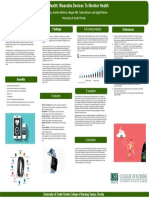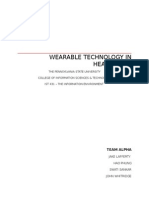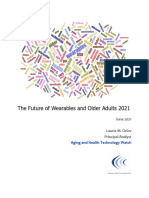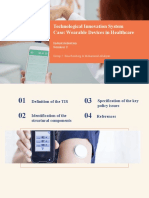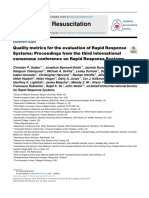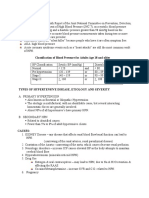0% found this document useful (0 votes)
25 views3 pagesWearable Health Tech
Wearable health technology is revolutionizing personal health management by enabling real-time monitoring of physical activity and vital signs through devices like fitness trackers, smartwatches, and medical wearables. These technologies provide benefits such as early detection of health issues, personalized health insights, and improved chronic disease management, while also facing challenges related to data privacy, accuracy, and cost. The future of wearable health tech looks promising with advancements in AI and sensor integration, further enhancing health monitoring capabilities.
Uploaded by
tejasbankar789Copyright
© © All Rights Reserved
We take content rights seriously. If you suspect this is your content, claim it here.
Available Formats
Download as DOCX, PDF, TXT or read online on Scribd
0% found this document useful (0 votes)
25 views3 pagesWearable Health Tech
Wearable health technology is revolutionizing personal health management by enabling real-time monitoring of physical activity and vital signs through devices like fitness trackers, smartwatches, and medical wearables. These technologies provide benefits such as early detection of health issues, personalized health insights, and improved chronic disease management, while also facing challenges related to data privacy, accuracy, and cost. The future of wearable health tech looks promising with advancements in AI and sensor integration, further enhancing health monitoring capabilities.
Uploaded by
tejasbankar789Copyright
© © All Rights Reserved
We take content rights seriously. If you suspect this is your content, claim it here.
Available Formats
Download as DOCX, PDF, TXT or read online on Scribd
/ 3










